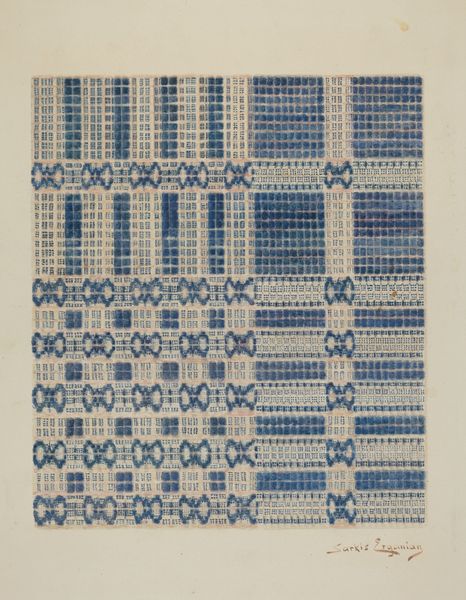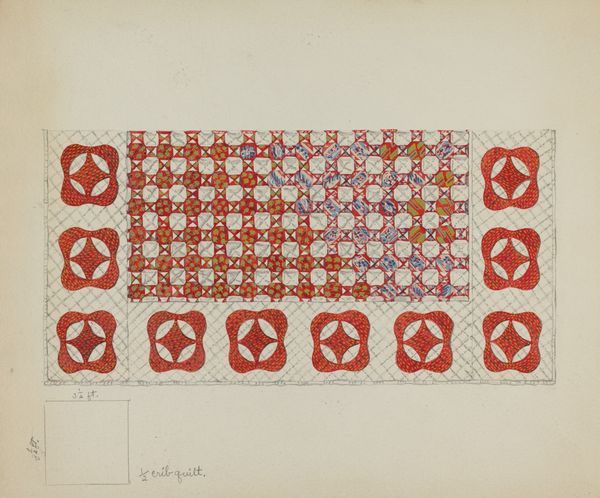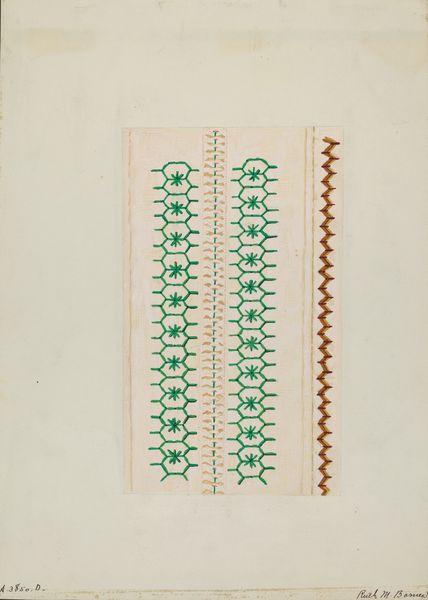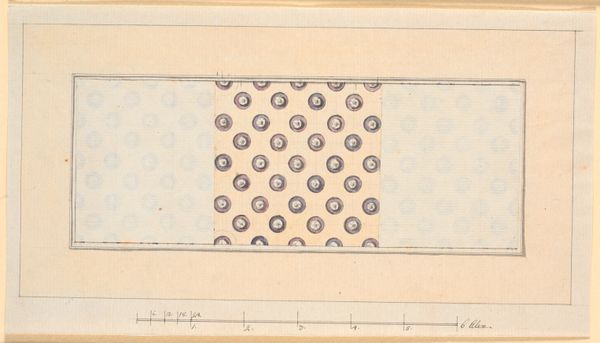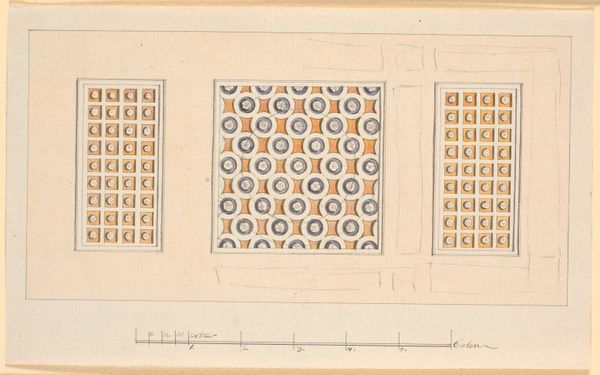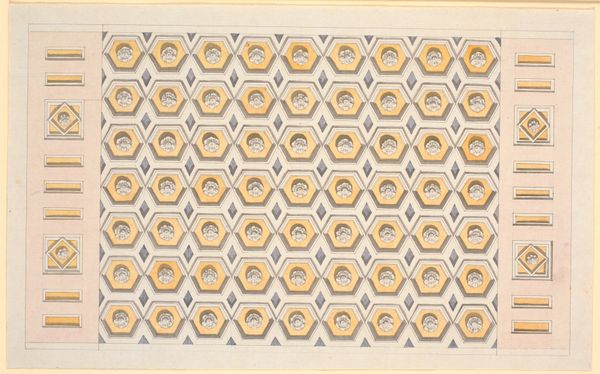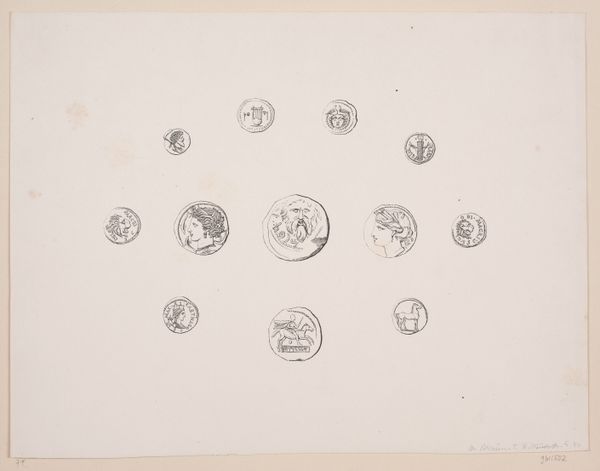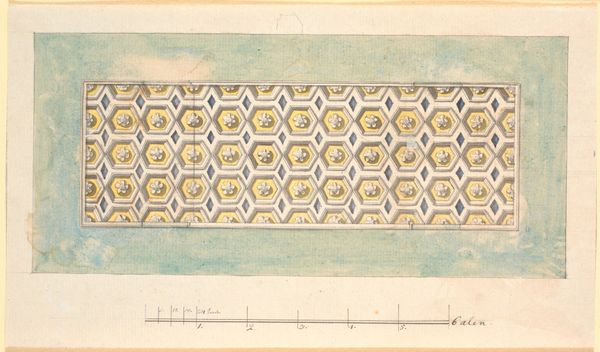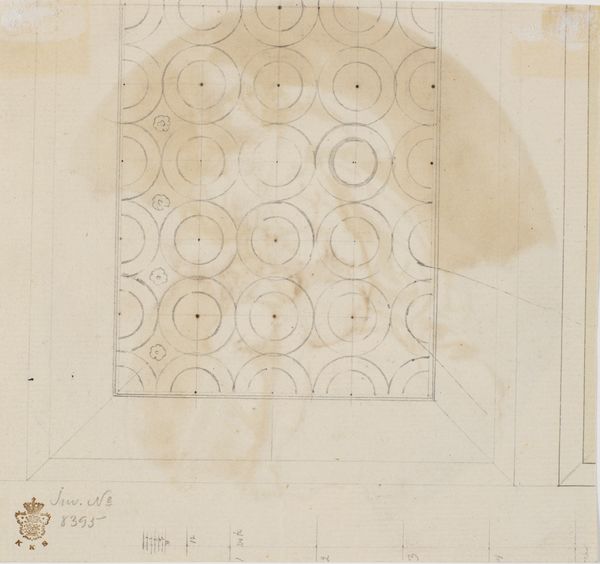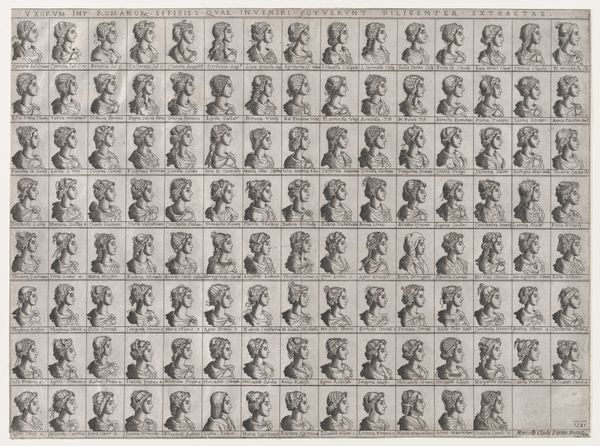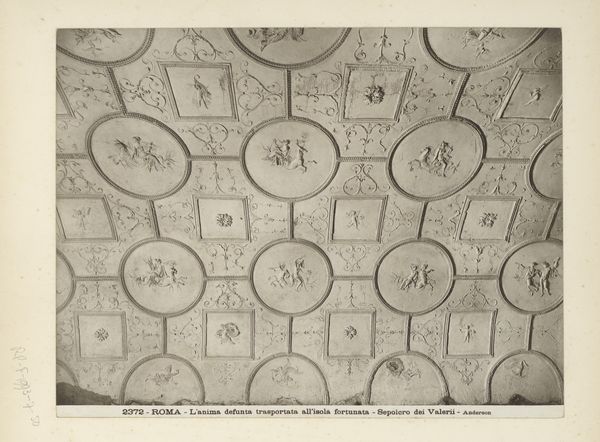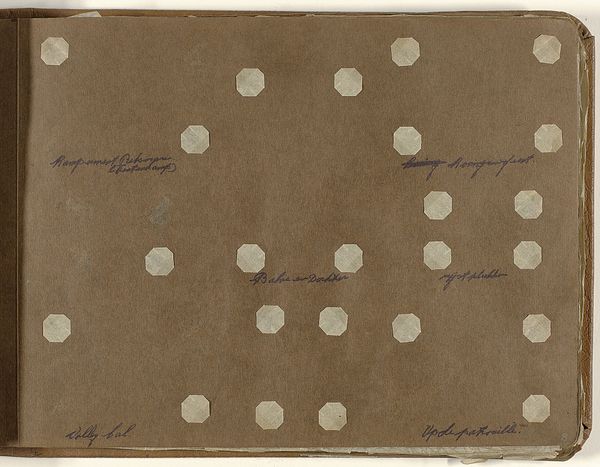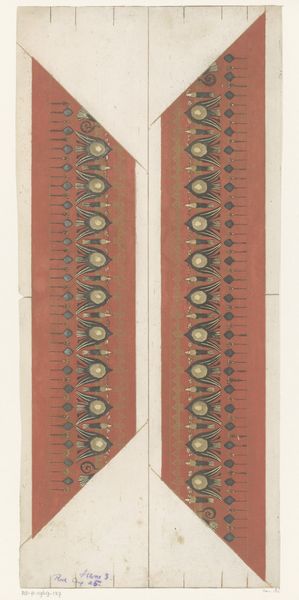
Udkast til et loft med cirkelrunde kassetter i gult og violet 1743 - 1809
0:00
0:00
drawing
#
drawing
#
neoclassicism
#
pattern
#
pattern background
#
geometric
Dimensions: 472 mm (height) x 274 mm (width) (bladmaal)
Curator: Here we have a preparatory drawing by Nicolai Abildgaard, dating sometime between 1743 and 1809. It's titled "Udkast til et loft med cirkelrunde kassetter i gult og violet," which translates to "Draft for a ceiling with circular coffers in yellow and violet." Editor: Oh, my! That's a very cool visual pattern! Like a minimalist's dream kaleidoscope. So ordered, and yet somehow, makes me feel slightly dizzy in a pleasant, sun-dappled way. I guess the colors do create a kind of optical harmony. Curator: Precisely! The drawing showcases a Neoclassical style, all clean lines and geometric shapes and with a classical-inspired ornamentation that really evokes that era's obsession with ancient aesthetics, the very architecture that’s almost screaming for it. We can imagine how this coffered design was originally intended to add an aura of grandness. Editor: Thinking of that grandness, this brings up a rather peculiar question – I mean, imagine the craftsmen who’d have had to repeat the geometrical motifs and then scale up the vision in Abildgaard's study in order to bring the coffer up. Curator: It really gives insight into workshop labor. When considering how such ornamentation became a physical reality, crafted tile by tile by actual human hands! We can really appreciate the artistry that goes in its crafting. Editor: I know, like were they feeling that order? Or fighting against its restraint as they put this coffer piece by piece by painstaking and possibly uncredited labor? Maybe that’s why I get a sense of slightly anarchistic bliss from it, because ultimately that regularity couldn't be mastered! So yeah, a little something wild amidst the constraint... that’s the magic of design. Curator: Definitely! It also has this way of demonstrating creativity can lie in not only conceiving the aesthetic as a goal, but thinking about what design elements—form, materials, etc.—make artwork unique as well, when actually crafted. I suppose Abildgaard was after that same spirit, and how art can become real in this world. Editor: This piece gives an entirely different perception regarding material reality to us, especially with such pieces made centuries ago. So, what begins as Abildgaard's beautiful ceiling, ends with someone going, "Cool design, that." And someone like me gets to think: human labor can give rise to something really fantastic even without all this conceptual blather. Curator: True enough, sometimes the raw making says more than a million intentions. It just is! Thank you for sharing. Editor: Likewise.
Comments
No comments
Be the first to comment and join the conversation on the ultimate creative platform.
